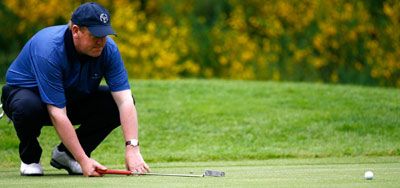In June 2007, Golf Digest readers pushed back their visors and scratched their heads as they read about a new golf swing growing popular on the PGA Tour. The swing seemed to run counter to the sport's conventional wisdom, particularly with respect to weight shift and lateral movement. Not only that, it looked downright odd, as if you stood a chance of falling over while attempting it. Nevertheless, pros were flocking to it and reporting significant improvements in their games. It was called the stack and tilt swing, and it was developed by well-known PGA Tour instructors Michael Bennett and Andy Plummer.
Stack and tilt is a swing designed to maximize how straight and how far the ball flies. Some swings -- for example, the putt -- will be straighter. And others may drive farther. But stack and tilt is meant to be the best combination of both. It keeps you on the fairway while helping you to gain enough distance to keep your score low.
Advertisement
Interest in stack and tilt rivaled that of any instructional article Golf Digest had yet published, and the magazine reported receiving hundreds of questions and comments [source: Finch]. Many people said they had markedly stepped up their games with the new swing, while others were "simply intrigued by its complete assault on traditional instruction" [source: Plummer]. Critics weighed in as well, claiming that the new swing was little more than an update of the old "reverse pivot" and argued that the stack and tilt was too tricky for most weekend golfers [source: Logan].
In this article, we'll look at how stack and tilt works and how it differs from the traditional golf stance and swing.
Advertisement


